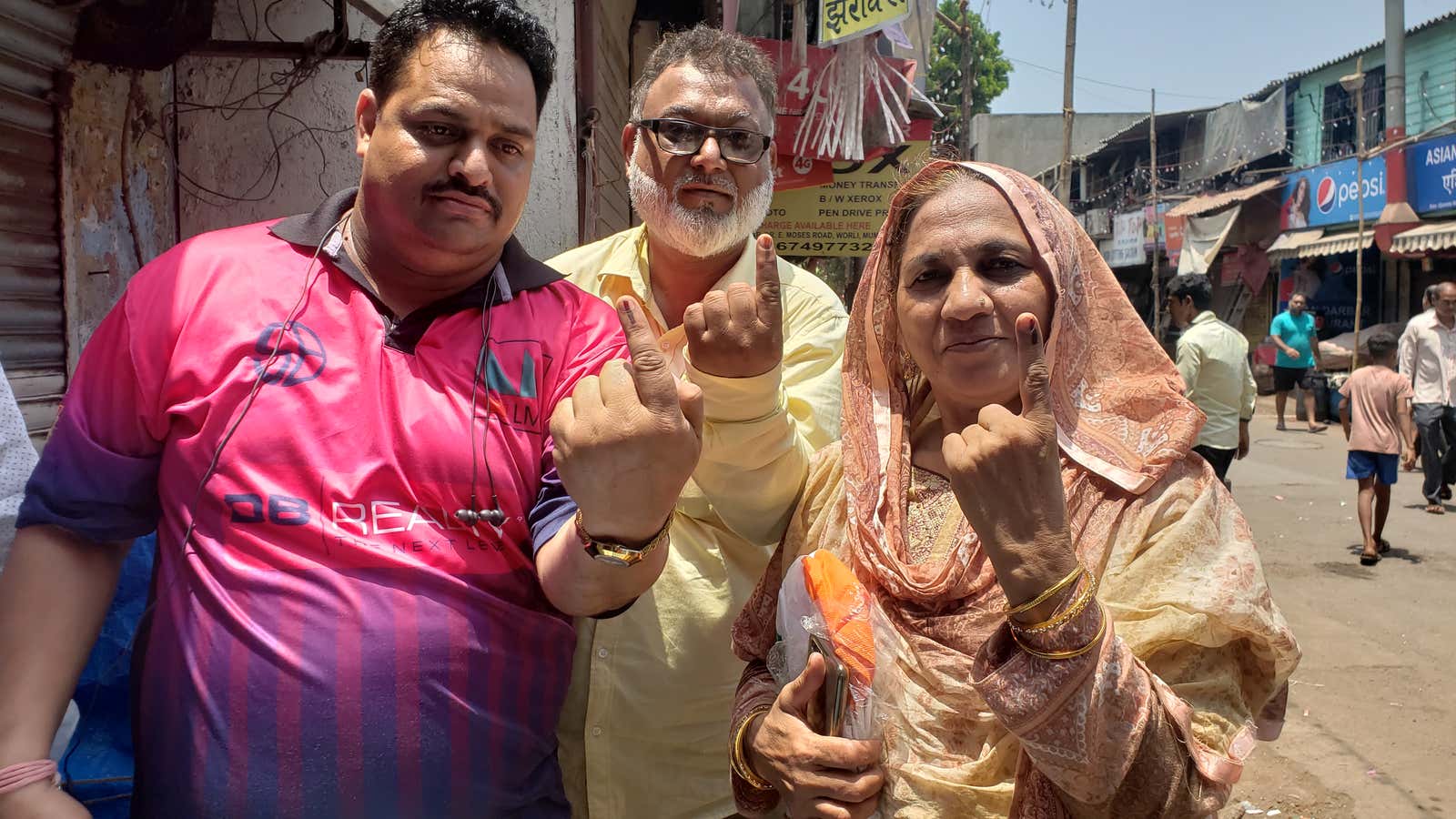India’s 2019 parliamentary election is likely to see the highest voter turnout ever.
After four phases, the voting percentage in the country stood at 67%, almost comparable to 67.6% in the entire 2014 election.
Going by the current numbers, a marginal 1% increase in the voter turnout could see India witness highest-ever voter turnout in its election history, according to a May 02 report released by the economic research department of the State Bank of India (SBI), the country’s largest lender.
The report, however, pointed out that in the delayed elections of 1985 in two states, Assam and Punjab, voter turnout stood at 72%. The average turnout for 1984 and 1985, stood at 67.9%.
In fact, going by the current trends, the 2019 edition is proving to be unique in many respects.
States like Andhra Pradesh, Assam, Gujarat, and Karnataka have witnessed the highest ever voter turnouts since 1962. Chhattisgarh has seen a 15-year and Maharashtra a 30-year high.
This proves that extensive and continuous campaigns by multiple stakeholders such as the election commission, government, and the civil society at large have succeeded.
Encouragingly, the report said, women voters—previously missing from electoral process mostly due to various socio-economic reasons—have come out in huge numbers this time. This could be attributed to schemes like Jan-Dhan Mudra (aimed at extending micro-finance to small businesses) and Ujjwala (providing women access to clean source of energy for cooking).
What’s also interesting is that young voters, a segment that is historically seen as a reluctant group, are also out in higher numbers. There is a 3.3% increase in voter turnout in states like Assam, Bihar, Uttar Pradesh, Andhra Pradesh, Kerala, Chhattisgarh, Madhya Pradesh (partial), and Rajasthan (partial) where the share of younger voters (aged between 18-25) is more than the national average, according to SBI report.
Yet, the elderly, too, are making their presence felt strongly. In Maharashtra, Karnataka, and Kerala, where the elderly population is higher than the national average, voter turnout is up 1.8%, according to the SBI report.
The states are also voting independent of their socio-economic condition. The SBI report noted that western India, home to states with relatively less poverty, is seeing better voter turnout in 2019 vis-à-vis 2014.
Southern Indian states also have lower levels of deprivation, and with the exception of Tamil Nadu, they have improved their voter turnout. For instance, Andhra Pradesh and Kerala have registered an improvement in voter turnout to the tune of 5.2% and 3.8% respectively from 2014.
In comparison, the performance has fallen for northeastern states like Arunachal Pradesh, Tripura, Sikkim, and Nagaland, all spread across the spectrum from low-to-high poverty levels. It has increased for Manipur, Meghalaya, Assam, and Mizoram, though.
In Odisha and Chhattisgarh, two states high up on the multi-dimensional poverty index (MPI) scale, turnout has fallen in the first and increased in the second.
Read Quartz’s coverage of the 2019 Indian general election here.
